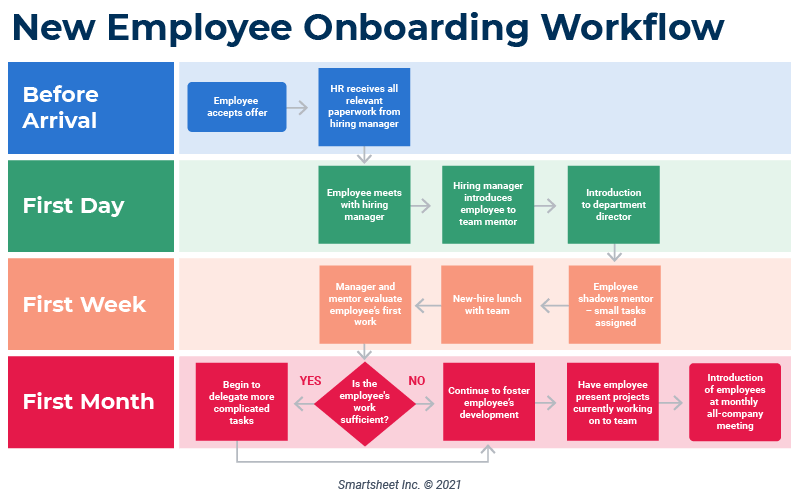Introduction
In the world of modern System Administration and Linux DevOps, automation is not just a luxury; it’s a necessity. Managing services—the daemons and background processes that power our applications—is a fundamental task. However, this task is complicated by the sheer diversity of operating systems and their underlying init systems. A Linux Server running a modern distribution like Ubuntu Tutorial or Red Hat Linux uses systemd, while an older CentOS system might rely on SysVinit, and a Windows server has its own Service Control Manager. Writing custom Bash Scripting or PowerShell scripts for each variant is inefficient and error-prone.
This is where Ansible, a cornerstone of Linux Automation, provides an elegant and powerful solution. Through its built-in modules, Ansible abstracts away these low-level differences, allowing you to write a single, declarative playbook to manage services across your entire infrastructure. This article provides a comprehensive guide to mastering service management with Ansible, focusing on its core service module. We will explore its fundamental concepts, demonstrate practical cross-platform implementations, delve into advanced techniques like handlers, and outline best practices to ensure your automation is robust, idempotent, and efficient.
Core Concepts of the Ansible Service Module
At the heart of Ansible’s service management capabilities is the ansible.builtin.service module. Its primary purpose is to provide a unified interface for interacting with the various init systems found across Linux Distributions. Instead of you needing to know whether to run systemctl, /etc/init.d/script, or update-rc.d, Ansible handles the detection and execution automatically. This abstraction is what makes your playbooks portable and resilient to OS upgrades.
Key Parameters and Idempotency
The module’s power lies in its simplicity and declarative nature. You specify the desired state of a service, and Ansible ensures the system matches that state. The most critical parameters are:
name: The name of the service you want to manage (e.g.,sshd,nginx,httpd).state: The target state for the service. Common values include:started: Ensures the service is running. If it’s stopped, Ansible will start it. If it’s already running, it does nothing.stopped: Ensures the service is not running. If it is, Ansible will stop it.restarted: Stops and then starts the service. This action is always performed.reloaded: Reloads the service’s configuration without a full restart, preventing dropped connections. This is ideal for services like Nginx or Apache.
enabled: A boolean (yes/no) that determines if the service should be configured to start automatically at boot.
This declarative approach guarantees idempotency. An operation is idempotent if running it multiple times produces the same result as running it once. When you declare state: started, Ansible first checks if the service is running. If it is, the task is marked as “ok” (green) and no action is taken. This prevents unnecessary and potentially disruptive service restarts, making your automation safe to run repeatedly.
Basic Service Management Example
Let’s look at a simple playbook that ensures the Nginx web server is installed, running, and enabled to start on boot on a Debian Linux or Ubuntu system. This is a foundational task for any Linux Web Server setup.
---
- name: Ensure Nginx is running
hosts: webservers
become: yes
tasks:
- name: Install Nginx package
ansible.builtin.apt:
name: nginx
state: present
update_cache: yes
- name: Ensure Nginx service is started and enabled
ansible.builtin.service:
name: nginx
state: started
enabled: yesIn this example, the first task installs the package. The second task uses the service module to guarantee the `nginx` service is running and will persist after a reboot. If you run this playbook again, Ansible will see that Nginx is already installed and running, and no changes will be made.
Practical Implementation Across Different Systems

The true value of the service module shines when managing a heterogeneous environment. A single playbook can manage services across different families of Linux Distributions and even extend to Windows with the appropriate modules, demonstrating Ansible’s flexibility for enterprise-level Linux Administration.
Handling Linux Distribution Diversity
Different Linux families often use different package and service names for the same software. For example, the Apache web server is called apache2 on Debian/Ubuntu but httpd on Red Hat Linux/CentOS/Fedora Linux. Ansible’s “facts” — variables containing information about the remote system — allow us to handle this gracefully.
The following playbook installs and starts the Apache web server on both Debian-family and RedHat-family systems. Notice how the task using the service module remains identical, while variables handle the name differences.
---
- name: Install and run Apache on multiple Linux distros
hosts: all
become: yes
vars:
apache_package: "{{ 'apache2' if ansible_os_family == 'Debian' else 'httpd' }}"
apache_service: "{{ 'apache2' if ansible_os_family == 'Debian' else 'httpd' }}"
tasks:
- name: Install Apache web server
ansible.builtin.package:
name: "{{ apache_package }}"
state: present
- name: Ensure Apache service is started and enabled
ansible.builtin.service:
name: "{{ apache_service }}"
state: started
enabled: yesThis playbook is a perfect example of writing portable automation. The logic for determining the correct package and service name is centralized in the `vars` section, making the tasks clean and readable. The service module transparently handles whether it needs to call systemctl start httpd or systemctl start apache2.
Managing Windows Services
While the ansible.builtin.service module is for Unix-like systems, Ansible provides an equivalent for Windows: ansible.windows.win_service. It follows the same declarative principles, making it intuitive for administrators who manage mixed environments. The parameters are slightly different to match Windows terminology (e.g., start_mode instead of enabled), but the core concept is identical.
Here’s how you would ensure the Windows Print Spooler service is running and set to start automatically.
---
- name: Manage Windows services
hosts: windows_servers
tasks:
- name: Ensure the Print Spooler service is running and set to auto
ansible.windows.win_service:
name: Spooler
state: started
start_mode: autoThis ability to use a single automation framework and a consistent philosophical approach for both Linux Server and Windows environments is a massive productivity boost for any System Administration team.
Advanced Techniques: Handlers and Service Facts
Beyond basic state management, Ansible offers more sophisticated patterns for handling services, particularly in response to configuration changes. Using these advanced techniques is crucial for building robust and efficient automation workflows.
Using Handlers for Efficient Restarts
A common automation task is updating a configuration file and then restarting the associated service to apply the change. A naive approach would be to add a `service` task with `state: restarted` right after the configuration task. However, this would restart the service on every single playbook run, even if the configuration file didn’t change, causing unnecessary downtime. The correct and idempotent way to handle this is with handlers.




A handler is a special task that only runs when “notified” by another task. A task sends a notification only if it makes a change to the system. This creates a powerful link: “If and only if this configuration file is updated, then restart the service.”
This playbook updates the Nginx configuration and uses a handler to restart the service only when necessary.
---
- name: Configure Nginx and restart on change
hosts: webservers
become: yes
tasks:
- name: Copy Nginx configuration file
ansible.builtin.copy:
src: files/nginx.conf
dest: /etc/nginx/nginx.conf
owner: root
group: root
mode: '0644'
notify:
- Restart Nginx
handlers:
- name: Restart Nginx
ansible.builtin.service:
name: nginx
state: restarted
listen: "Restart Nginx"Here, the `copy` task includes a `notify` directive. If the `nginx.conf` file on the server is different from the source file, Ansible will copy the new file, mark the task as “changed,” and queue the “Restart Nginx” handler to run at the end of the playbook. If the files are identical, no change is made, and the handler is never triggered.
Gathering Service Information with `service_facts`
Sometimes you need to know the state of services on a machine before making a decision. The ansible.builtin.service_facts module gathers information about all services on a host and stores it in the `ansible_facts.services` variable. This allows you to write conditional logic based on the status of a service.
This example demonstrates how to check if the `sshd` service is running and print a message accordingly, which can be useful for Linux Security audits or pre-flight checks.
---
- name: Check service status with service_facts
hosts: all
become: yes
tasks:
- name: Gather service facts
ansible.builtin.service_facts:
- name: Display SSHD status
ansible.builtin.debug:
msg: "SSHD service is running."
when: ansible_facts.services['sshd.service'] is defined and ansible_facts.services['sshd.service'].state == 'running'
- name: Display message if SSHD is not running
ansible.builtin.debug:
msg: "Warning: SSHD service is not running!"
when: ansible_facts.services['sshd.service'] is not defined or ansible_facts.services['sshd.service'].state != 'running'Using `service_facts` allows your playbooks to be more intelligent and reactive to the current state of your systems without making any modifications.




Best Practices and Common Pitfalls
To leverage Ansible’s service management capabilities effectively, it’s important to adhere to best practices and be aware of common mistakes.
Best Practices for Service Management
- Always Use Handlers for Restarts: As demonstrated, this is the most critical practice. It ensures idempotency and minimizes service disruption.
- Prefer `reloaded` Over `restarted`: For services that support it (like Nginx, Apache, and Postfix), using `state: reloaded` applies configuration changes without dropping active connections, leading to zero-downtime updates.
- Be Explicit with `enabled`: Always define the boot-time behavior of a service using the `enabled` parameter. This prevents ambiguity and ensures a server returns to the desired state after a reboot.
- Abstract Service Names with Variables: As shown in the cross-distro example, use variables for package and service names to make your roles and playbooks reusable across different operating systems.
Common Pitfalls to Avoid
- Reverting to Shell Commands: A common mistake for those transitioning from Shell Scripting is to use the `command` or `shell` module to run `systemctl restart my_service`. This completely bypasses Ansible’s idempotency checks and state management, making your automation brittle. Always use the native `service` module.
- Ignoring System Context: Starting a service is often not enough. You must also consider the surrounding context. A web server won’t be accessible if the Linux Firewall (managed with `iptables` or `firewalld`) is blocking its port, or if SELinux policies are preventing it from binding to the network. Always pair your service tasks with firewall and security module tasks.
- Hardcoding Names: Avoid hardcoding service names like `httpd` or `apache2` directly in tasks. This limits the playbook’s portability. Use conditionals or variables based on `ansible_os_family` to adapt to the target system.
Conclusion
The Ansible `service` module is a prime example of Ansible’s core philosophy: providing simple, powerful, and declarative tools to manage complex infrastructure. By abstracting away the underlying init systems of diverse operating systems like Debian Linux, Arch Linux, and even Windows, it empowers administrators and DevOps engineers to write clean, portable, and idempotent automation.
By mastering the use of states, embracing handlers for configuration changes, and applying best practices, you can build reliable workflows that manage the lifecycle of your critical services with confidence. Moving from imperative Linux Commands and scripts to Ansible’s declarative model is a fundamental step toward achieving robust and scalable Linux Automation. As a next step, consider exploring other foundational Ansible modules for managing Linux Users, configuring Linux Networking, and enforcing File Permissions to further enhance your automation capabilities.




